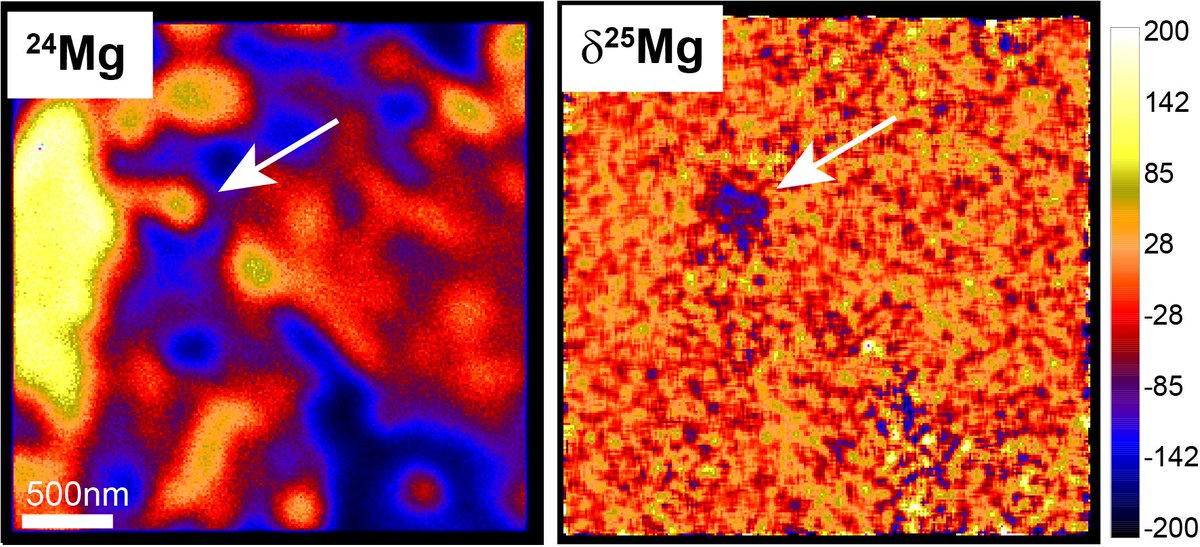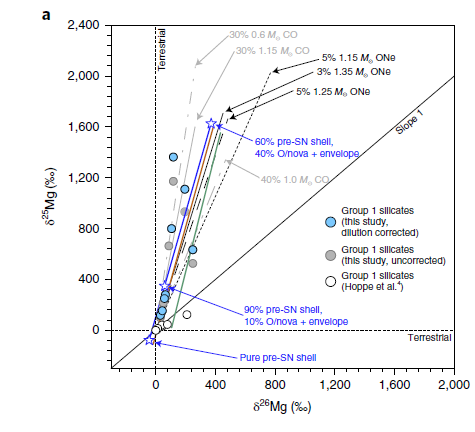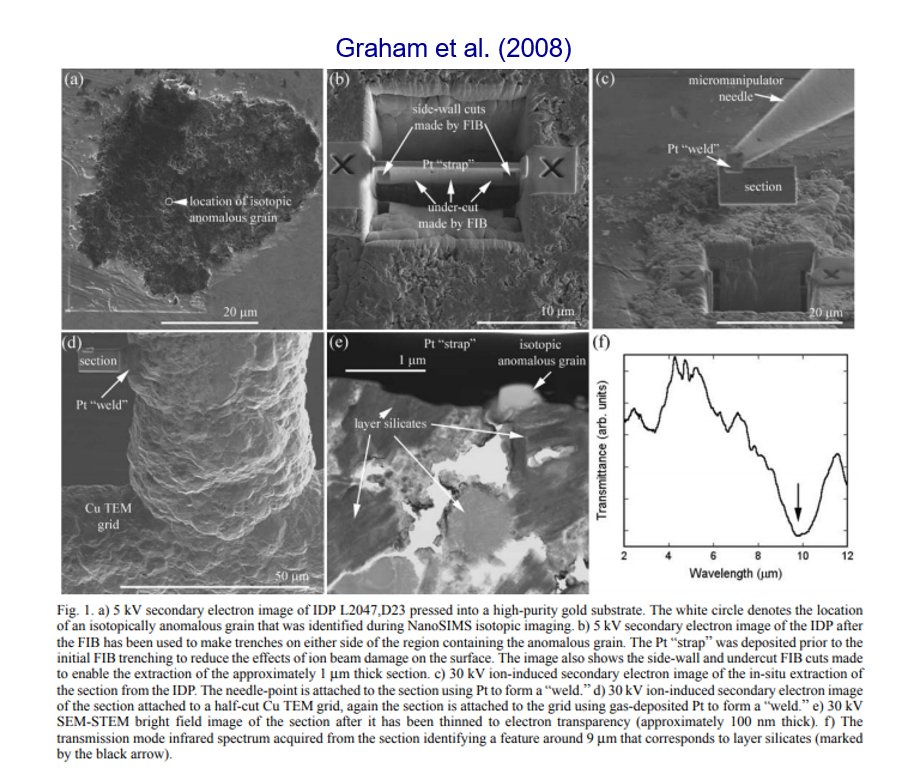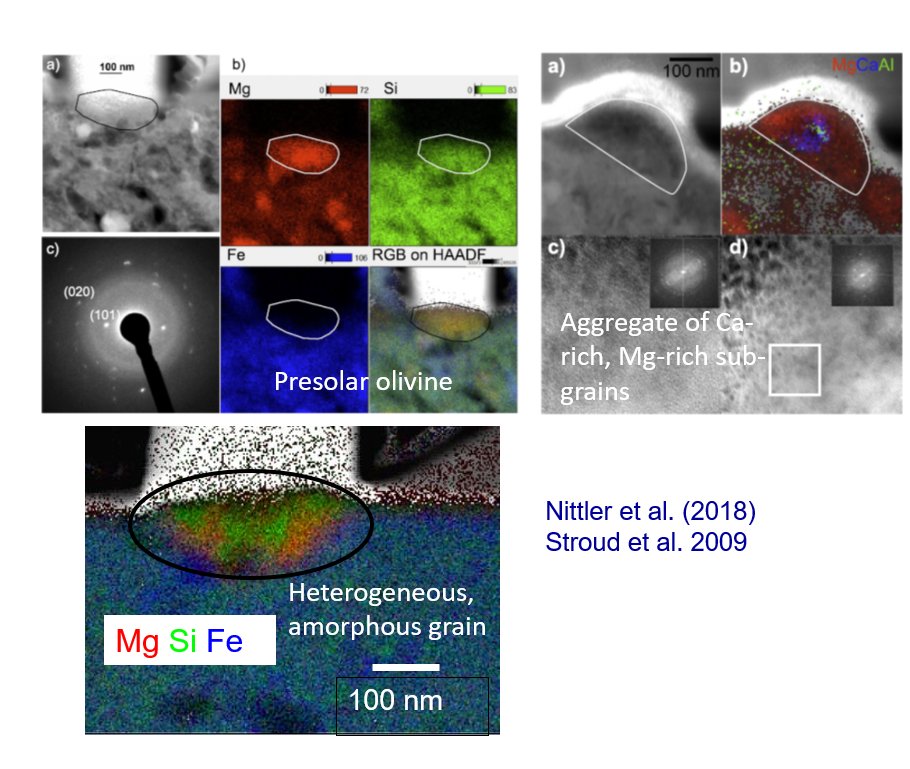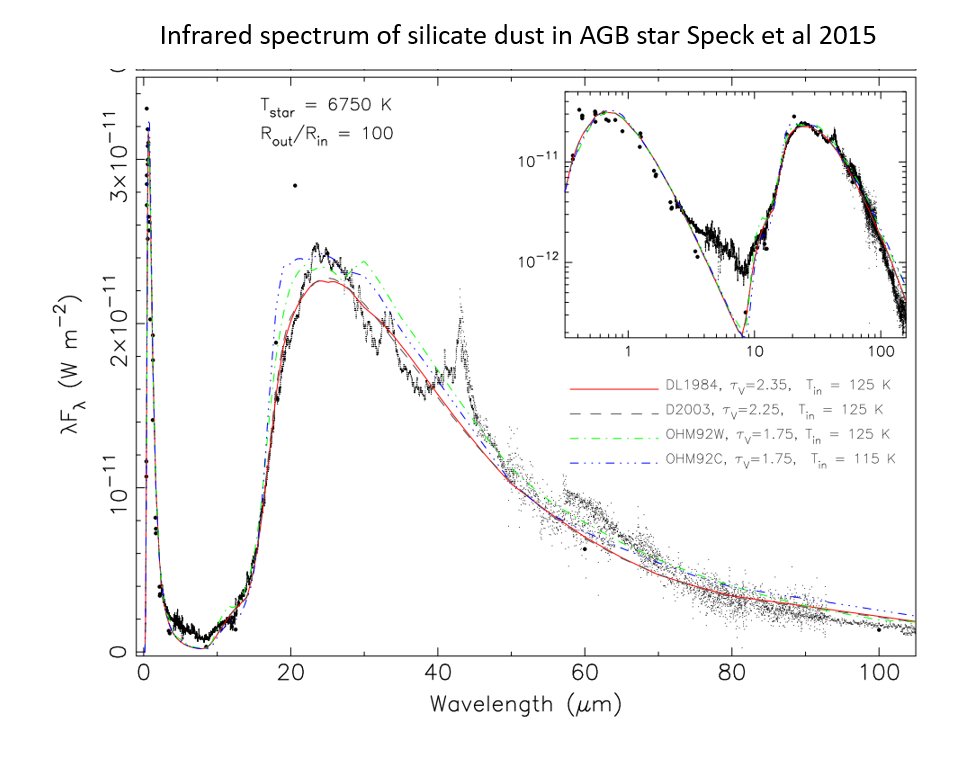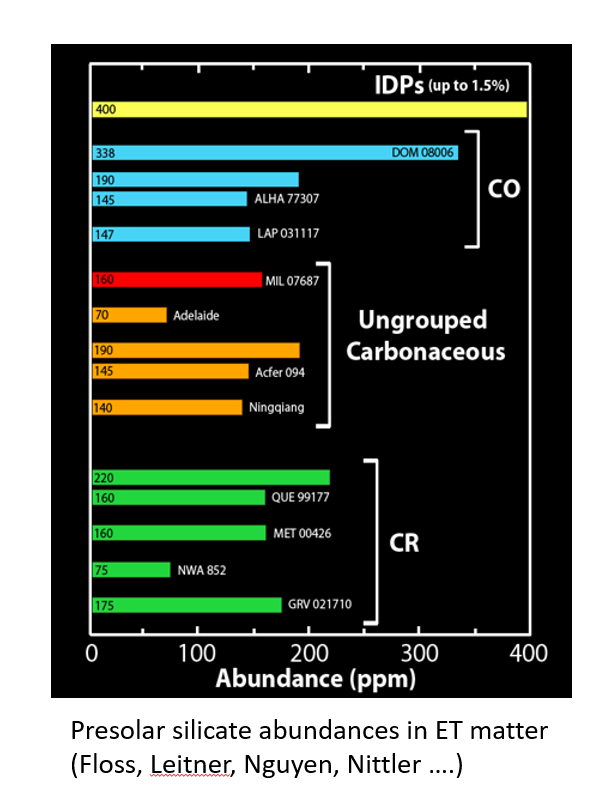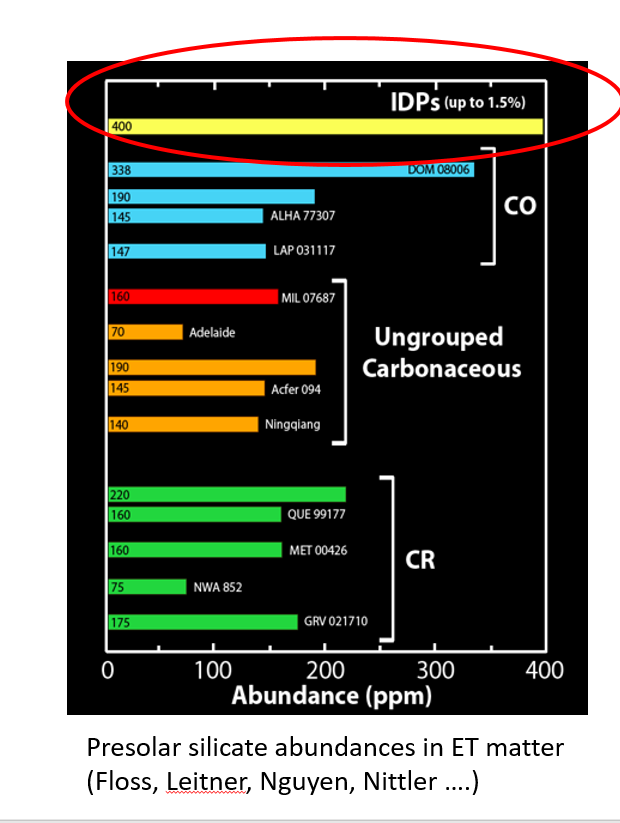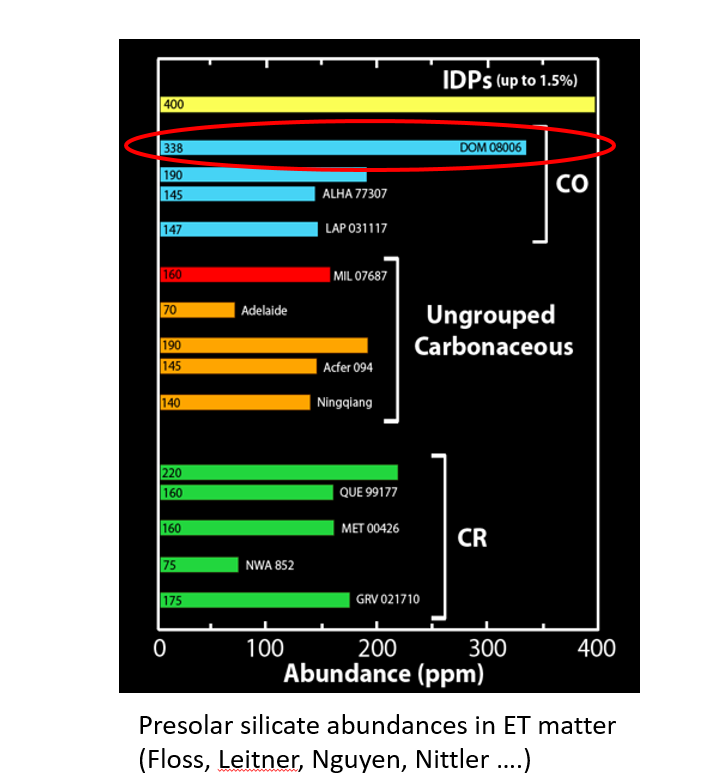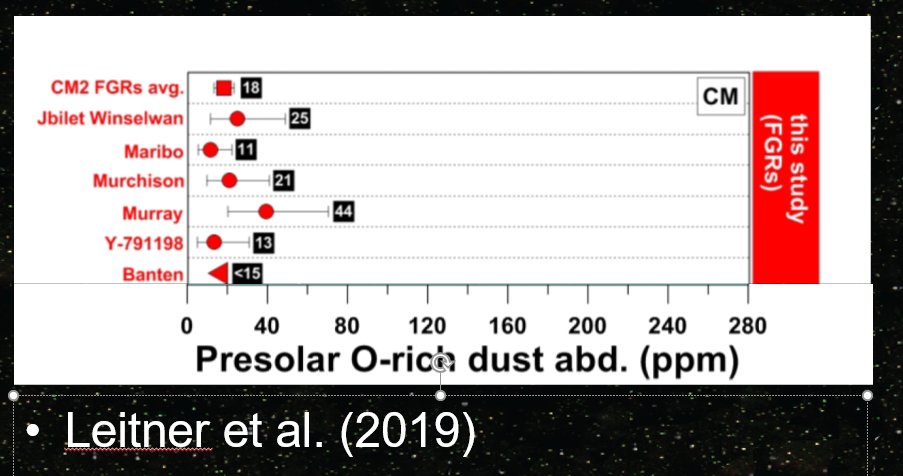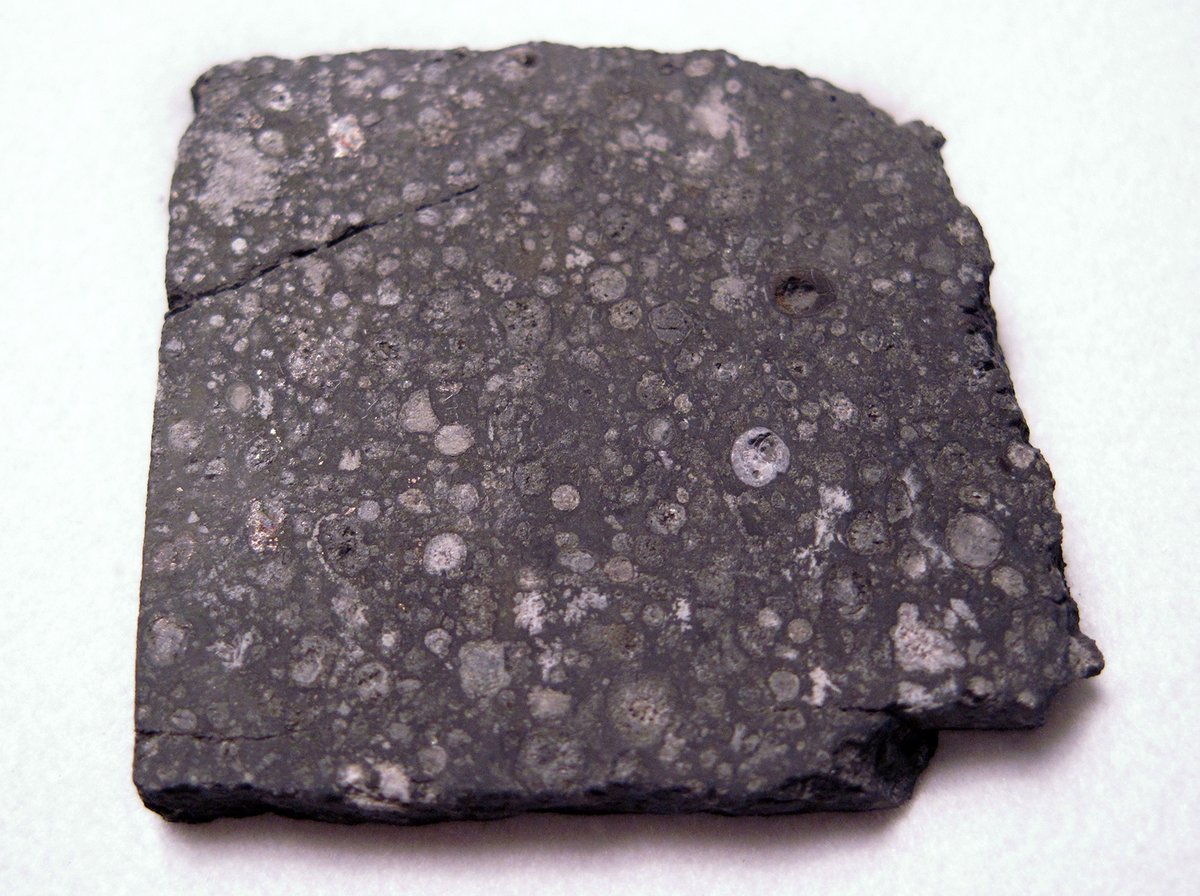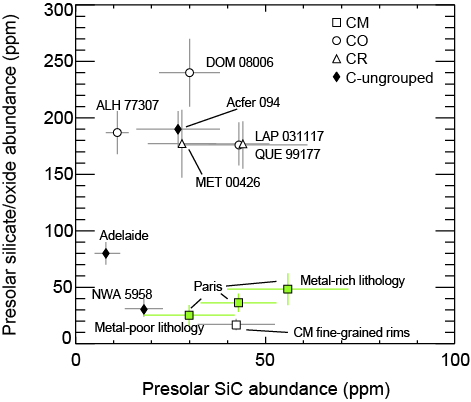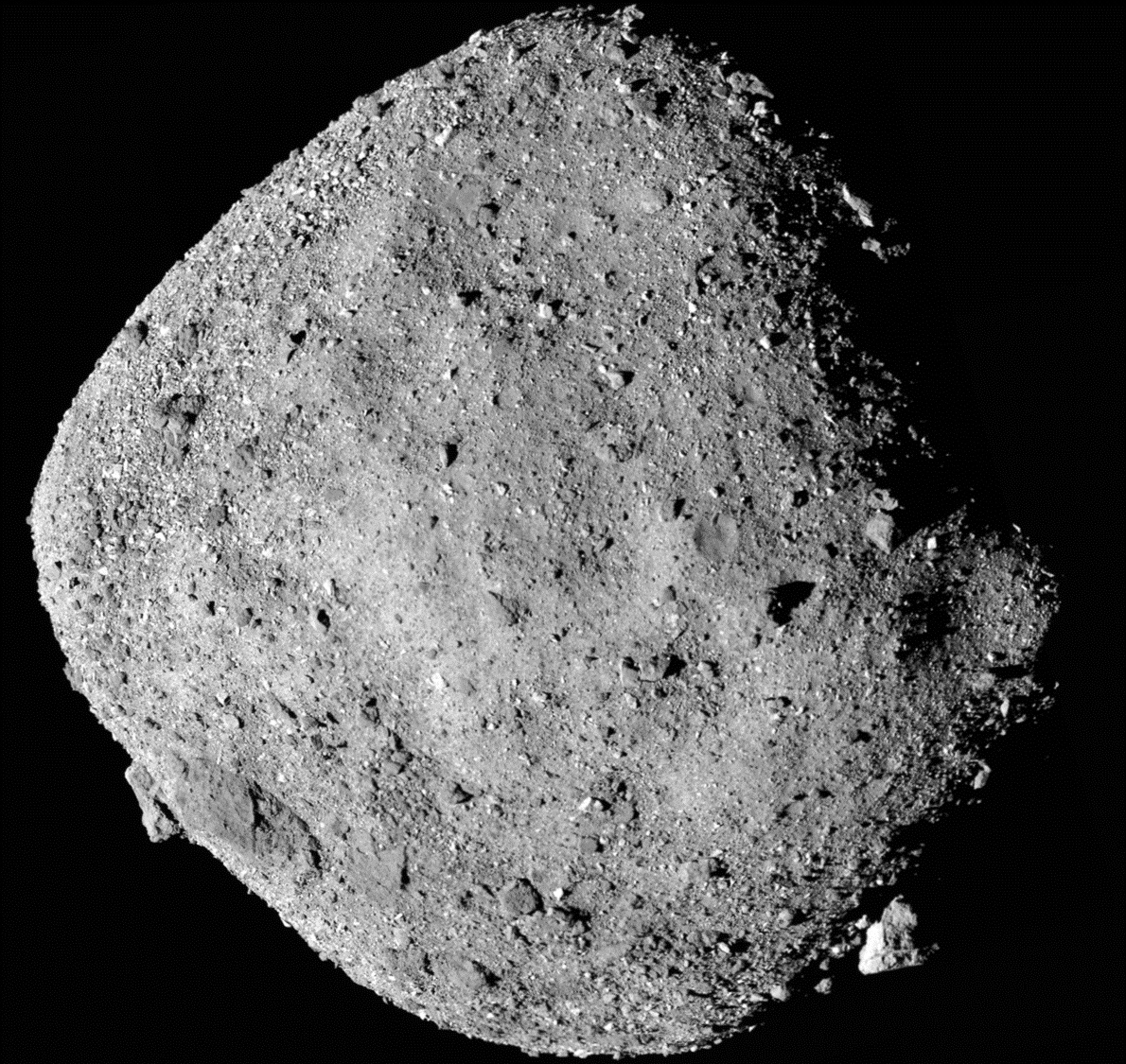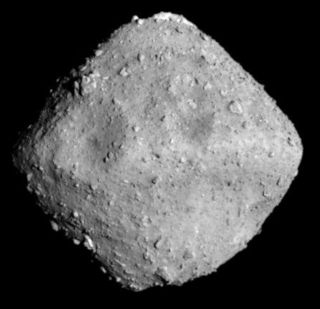Good morning y& #39;all. Y’day I talked about SiC, the best-studied #PresolarGrains since they can be easily isolated from meteorites, by dissolving everything else away with acids (burn down haystack to find needle). Switching gears to most abundant type: silicates (hay grains)
We have to find them by brute force mapping by #NanoSIMS. We use instrument 2 make high-res (~100 nanometer) maps of O isotopes in polished slices of meteorites & look for spots with unusual ratios. Each 10x10 micron image may take 1-2 hrs so takes a long time to cover much area.
And we need to cover a lot of area. Even in meteorites with highest abundances of presolar silicates, may only find one grain every few #NanoSIMS maps. But it’s worth the time because they are very interesting and useful grains indeed
Where are presolar silicates from? O isotopes in silicates (and related oxides, like Al2O3 [sapphire]) span huge range and based on comparison to both astronomical observations & models, we can conclude where most came from (AGB stars, supernovae, maybe novae). dashed lines terr.
That most grains come from AGB stars is supported by comparison w astronomical spectroscopic data: O-rich AGB stars and majority of grains overlap (tho much smaller error bars on grains). 17O-rich, 18O-poor is signature of H burning.
Recently, new #NanoSIMS technology has allowed for higher resolution measurements of elements like Mg and Fe in presolar silicate grains. Here is example of ~150-nm grain with ~10% depletion of 25Mg, relative to the solar system. We don& #39;t yet understand this result
One thing new Mg measurements has shown is some grains have too much 25Mg for AGB star models. (e.g @natureastronomy paper by Leitner et al: https://www.nature.com/articles/s41550-019-0788-x);">https://www.nature.com/articles/... maybe some silicates that we thought are from AGB stars are from supernovae!
We can also use technology called FIB (focused ion beam) to cut presolar silicates out of meteorite section (or IDP) and analyze by electron microscopy. This has now been done for a few dozen and they show huge range of compositions.
Some presolar silicates are single crystals of typical minerals like olivine/pyroxene. Others are heterogeneous and non-stoichiometric. Many are amorphous are only partially crystalline.
Astronomers use spectra to study what kinds dust form around stars, but average over gajillions of grains. Presolar grains show that wider range of mineral types than prev recognized. We are working on ways to directly measure optical properties of these tiny grains…
Such data will provide input to astronomers for more complete interpretation of their data and a better understanding of the physical chemistry of how dust grows in cooling stellar outflows.
Presolar silicates also really useful for probing asteroid processes, since they’re highly sensitive to heating and effect of water, both which can destroy/modify grains so no longer recognized as presolar. Thus abundances are measure of how unmodified (primitive) a sample is.
Cometary IDPs (see earlier thread) have highest presolar silicate abundances, consistent with their comet sources being less (or un-)altered compared to asteroids. But, maximum value still only 1% - comets are still made mostly of stuff from the solar system.
Meteorites range from 0 to a few hundred parts per million of presolar silicates. ( #PresolarGrains are *rare* - need to do a lot of #NanoSIMS mapping top find them). Highest abundance in a carbonaceous chondrite found in Antarctica called Dominion Range 08006 (~250 ppm)
Interestingly, CM chondrites, the most common type of carbonaceous chondrite, have lower abundances of presolar silicates. This likely reflects that these meteorites have all been affected to aqueous alteration on their parent bodies that destroyed the presolar grains.
Even the Paris meteorite, thought to be least altered CM chondrite, has lower presolar silicates than other types of carbonaceous chondrites. However, recently we were loaned sections of two very interesting Antarctic CMs from the Japanese collection …
named Asuka 12236 and Asuka 12169, which M. Kimura and colleagues showed are less altered even than Paris. I have now used #NanoSIMS to map these and found both have more presolar silicates than Paris, and A12169 has more than any prev meteorite!
I had hoped to present this result at a conference this summer but because of the pandemic, instead I am announcing it via @astrotweeps (we are also measuring organics in these meteorites)
So these Asuka meteorites really seem to be most primitive CM chondrites yet. This is cool cuz is important 2 know the full range of processes occurring on asteroids. Esp since CMs might be related 2 Bennu/ Ryugu, asteroids for @haya2e_jaxa and @OSIRISREx sample return missions
Finally, I want to point out that much of the groundbreaking work on presolar silicates was done by my friend Christine Floss, who tragically passed away 2 years ago this month. She was a remarkable scientist and here is a thread I made on her passing https://twitter.com/LarryNittler/status/988495159431221249">https://twitter.com/LarryNitt...

 Read on Twitter
Read on Twitter

![Where are presolar silicates from? O isotopes in silicates (and related oxides, like Al2O3 [sapphire]) span huge range and based on comparison to both astronomical observations & models, we can conclude where most came from (AGB stars, supernovae, maybe novae). dashed lines terr. Where are presolar silicates from? O isotopes in silicates (and related oxides, like Al2O3 [sapphire]) span huge range and based on comparison to both astronomical observations & models, we can conclude where most came from (AGB stars, supernovae, maybe novae). dashed lines terr.](https://pbs.twimg.com/media/EVK_fmZVAAEInCG.jpg)

